Papers by Emma Graumlich
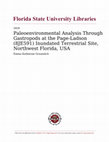
DigiNole - Florida State University , 2020
Excavations at the Page-Ladson site (8JE591) located in the Aucilla River in
northwestern Florida... more Excavations at the Page-Ladson site (8JE591) located in the Aucilla River in
northwestern Florida have revealed extensive inundated sediment sequences dating from approximately 17,000 to 8,500 years ago. These sediments contain artifacts that span from the Pre-Clovis period (14,500 years-old), through the Clovis period (13,200 years-old), and into the Early Archaic period (11,200 years-old). In addition to the stone tools and megafauna bones that
inform about the lifeways of pre-Clovis peoples, the sediments house environmental indicators that contribute to our understanding of the regional paleoenvironment. One such indicator is preserved gastropod shells. Gastropods, a large taxonomic class within the phylum Mollusca, are
one of the most valuable proxies for reconstructing past environments. This is due to their commonness at archaeological sites and the organism’s sensitivity to even the smallest of environmental changes. Through the sampling and analysis of gastropods at the Page-Ladson site, this study will increase our understanding of the local environment that the site’s inhabitants would have experienced, to help explicate the tempo of late Pleistocene and early Holocene environmental changes at the site, and, when combined with the extensive paleoenvironmental proxy records from the site, demonstrate the utility of gastropods for paleoenvironmental reconstruction.
Conference Presentations by Emma Graumlich

Excavations at the Page-Ladson site located within the Aucilla River in northwestern Florida have... more Excavations at the Page-Ladson site located within the Aucilla River in northwestern Florida have revealed extensive inundated sediment sequences dating from approximately 16,000 to 8,500 years ago. These sediments contain artifacts that span from the pre-Clovis period (14,500 years-old), through the Clovis period (13,200 years-old), and into the Early Archaic period (11,200 years-old). In addition to stone tools and megafaunal bones that inform about the intricacies of pre-Clovis lifeways, sediments house environmental indicators that contribute to our greater understanding of the regional paleoenvironment. One such indicator is preserved gastropod shells. Gastropods, a large taxonomic class within the phylum Mollusca, are one of the most valuable proxies for reconstructing past environments. This is due both to their ubiquitous nature at archaeological sites and the organism’s sensitivity to even the slightest of environmental changes. Through the sampling and analysis of gastropods at the Page-Ladson site, this study hopes to increase our understanding of the local environment experienced by the site’s inhabitants, to help explicate the tempo of late Pleistocene and early Holocene environmental changes at the site, and, when combined with other extensive paleoenvironmental proxy records from the site, demonstrate the unique utility of gastropods for paleoenvironmental reconstruction.
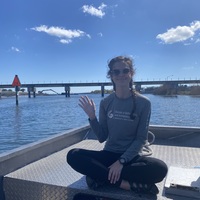
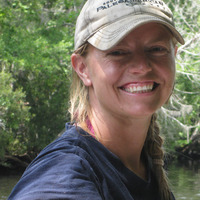
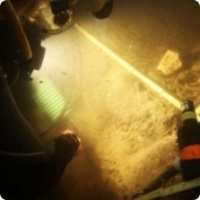
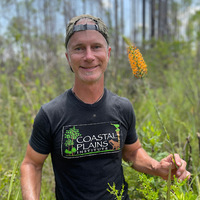
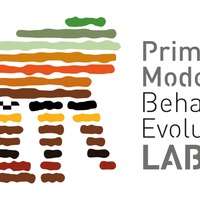




Uploads
Papers by Emma Graumlich
northwestern Florida have revealed extensive inundated sediment sequences dating from approximately 17,000 to 8,500 years ago. These sediments contain artifacts that span from the Pre-Clovis period (14,500 years-old), through the Clovis period (13,200 years-old), and into the Early Archaic period (11,200 years-old). In addition to the stone tools and megafauna bones that
inform about the lifeways of pre-Clovis peoples, the sediments house environmental indicators that contribute to our understanding of the regional paleoenvironment. One such indicator is preserved gastropod shells. Gastropods, a large taxonomic class within the phylum Mollusca, are
one of the most valuable proxies for reconstructing past environments. This is due to their commonness at archaeological sites and the organism’s sensitivity to even the smallest of environmental changes. Through the sampling and analysis of gastropods at the Page-Ladson site, this study will increase our understanding of the local environment that the site’s inhabitants would have experienced, to help explicate the tempo of late Pleistocene and early Holocene environmental changes at the site, and, when combined with the extensive paleoenvironmental proxy records from the site, demonstrate the utility of gastropods for paleoenvironmental reconstruction.
Conference Presentations by Emma Graumlich
northwestern Florida have revealed extensive inundated sediment sequences dating from approximately 17,000 to 8,500 years ago. These sediments contain artifacts that span from the Pre-Clovis period (14,500 years-old), through the Clovis period (13,200 years-old), and into the Early Archaic period (11,200 years-old). In addition to the stone tools and megafauna bones that
inform about the lifeways of pre-Clovis peoples, the sediments house environmental indicators that contribute to our understanding of the regional paleoenvironment. One such indicator is preserved gastropod shells. Gastropods, a large taxonomic class within the phylum Mollusca, are
one of the most valuable proxies for reconstructing past environments. This is due to their commonness at archaeological sites and the organism’s sensitivity to even the smallest of environmental changes. Through the sampling and analysis of gastropods at the Page-Ladson site, this study will increase our understanding of the local environment that the site’s inhabitants would have experienced, to help explicate the tempo of late Pleistocene and early Holocene environmental changes at the site, and, when combined with the extensive paleoenvironmental proxy records from the site, demonstrate the utility of gastropods for paleoenvironmental reconstruction.